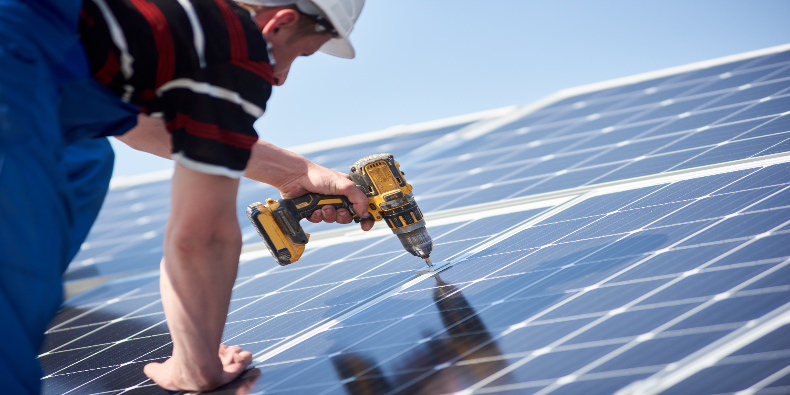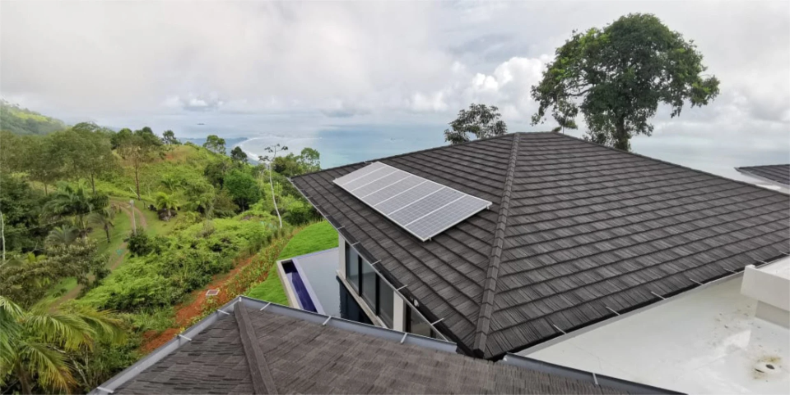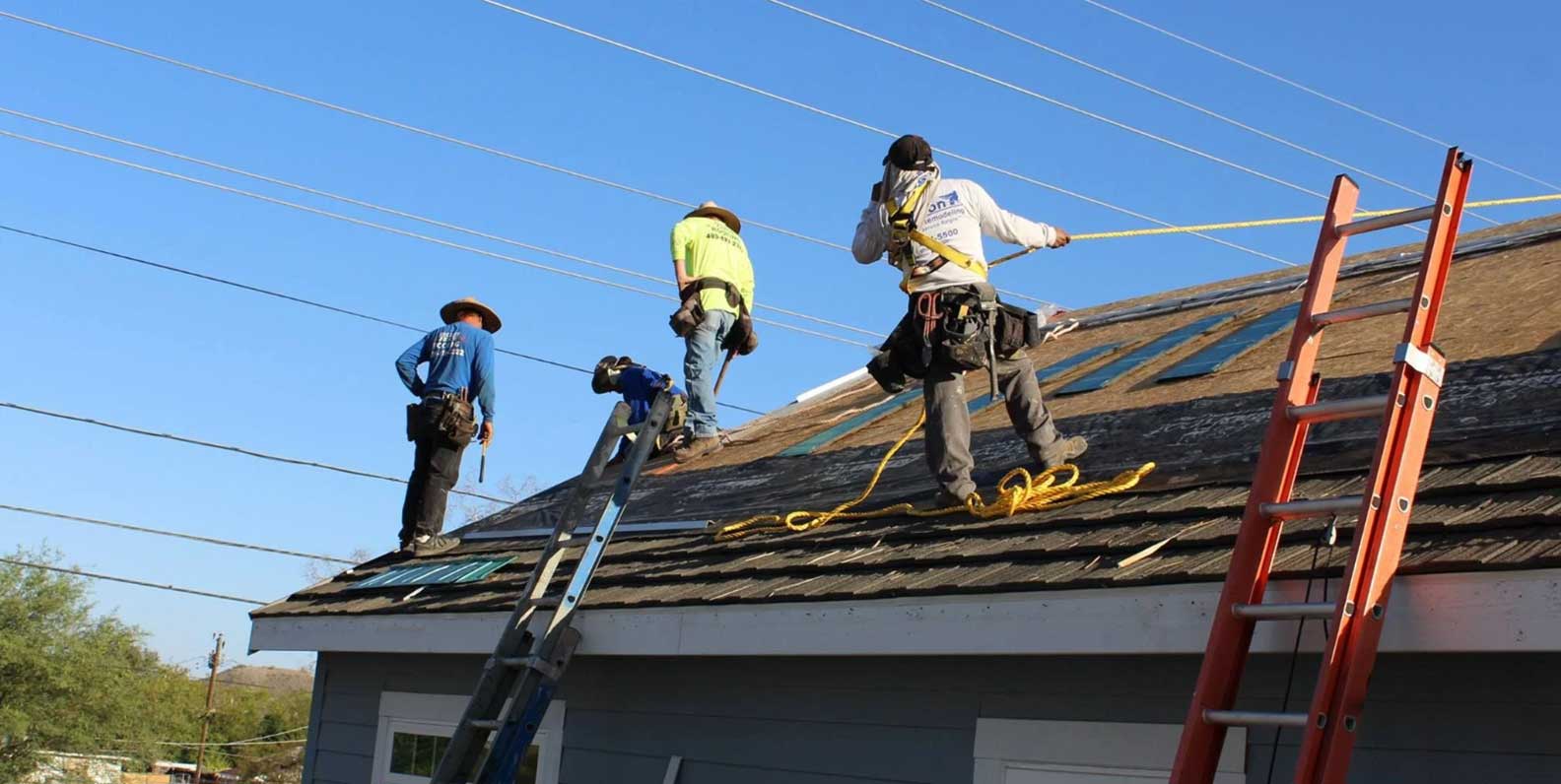Hail is expected to cause more than $1 billion in damages in 2022, with more than 20 states experiencing moderate to heavy damage. Hail is one of the most common causes of roof damage, however, homeowners in hail-prone regions can reduce their risk of damage and expensive repairs by knowing:
- How to spot hail damage on a roof.
- What to look for in a hail-resistant roof.
- What to expect from insurance in the event of damage.
1. How to Spot Hail Damage on a Roof
Even minor hail damage can be costly, so it’s critical for homeowners to spot hail damage as early as possible. Minor damage can quickly turn into major damage if a leak develops in the attic. Signs of hail damage can vary depending on the roof type, so be sure to review the resource below to learn how to identify roof damage as soon as possible.
>>>Related Resource: What does hail damage on a roof look like?
2. The Importance of a Class 4 Impact Rating
If you’re in a hail-prone region, you’ll want to make sure the roofing material you select has a UL2218 Class 4 Impact Rating.
Conducted by Underwriters Laboratories (UL), a not-for-profit independent organization that tests and certifies roofing products, the UL2218 Impact Rating test is considered the national standard for a roof’s ability to withstand hail.
Roofing materials are rated Class 1 through Class 4 based on their resistance to the impact of steel balls dropped from varying heights. A Class 4 rating is the highest rating a roofing material can achieve.
The Class 4 test simulates the damaging impact of a 2” hailstone by dropping a 2” steel ball onto the same spot twice from 20’ high. In order to achieve a Class 4 rating, the roofing material cannot exhibit any signs of fracture.
>>>Related Resource: Understanding hail impact ratings.
3. Where There is Hail, There is Wind
Hail is formed in wind updrafts of powerful thunderstorms. The updrafts push raindrops up into the frigid upper portion of the thunderstorm where it freezes into a hailstone. This process can repeat over and over again until the hailstone weighs more than the updrafts can hold, at which point the stone falls to the ground. Wind updraft speeds of 64 mph can support golf ball-sized hailstone and a grapefruit-sized hailstone requires 98 mph wind speeds.
While a hail-resistant roofing material with a Class 4 impact rating is crucial for hail-prone regions, a roofing material with superior wind resistance is equally important.
>>>Related Resource: What roofs are best for high winds?
4. Hail Damage is Not Covered by All Insurance Policies
Property expert Michael Ryan advises homeowners to be aware of the following when it comes to hail and insurance:
- It is important to know that hail damage is not covered by all insurance policies. Most policies will cover hail damage, but it is important to check with your insurance company.
- Most insurance policies have a deductible for hail damage, which means that the homeowner will have to pay for some of the repairs out-of-pocket. The amount of the deductible will vary depending on the policy, but it is typically a percentage of the total value of the home.
- Most policies will only cover damage that is considered to be "reasonable and necessary." This means that if the hail damage is not considered to be a safety hazard, the insurance company may not pay for the repairs.
- Remember that insurance policies have limits. This means that if the cost of the repairs exceeds the limit, the homeowner will be responsible for paying the difference.
- Be prepared for the financial costs of hail damage. This includes having emergency funds available to pay for repairs, as well as any deductibles that may be required by your insurance policy. If you do not have the cash set aside in advance, consider getting a home equity line of credit to be prepared.
>>>Related Resource: How the Type of Roof You Have May Affect Your Homeowners Insurance.
5. Metal Roofing is One of the Best Roofs for Hail
Durability and longevity are essential components of a hail-resistant roof. This is why metal roofing is considered one of the best roofs for hail. In addition to having the highest Class 4 Impact Rating, metal roofs are able to withstand nearly anything Mother Nature has to offer, including:
- Hurricanes, Tornadoes and High Winds: Metal roofing provides superior protection against high winds and is approved for high-velocity hurricane zones.
- Salt Air and Humidity: Metal roofing can resist rust and oxidation in moist and humid salt air environments.
- Snow and Ice: Lightweight and non-porous metal roofing can withstand repeated freeze and thaw cycles.
- Fire: As a non-combustible material, metal roofs have the highest Class 4 fire rating.
>>>Related Resource: What is the Best Type of Roof for Hail?
DECRA Metal Roofing for Hail
As the original stone-coated metal roofing manufacturer, DECRA Metal Roofing products have withstood the test of time since 1957. Manufactured at our state-of-the-art facility in California, our products are tested above and beyond the requirements to ensure the quality that DECRA is known for is present in each and every stone-coated metal roofing panel we produce.
Ready to see and feel the DECRA difference? Order a complimentary sample today.
Editor’s Note: This post was originally published in 2021 and has been updated with current information.








